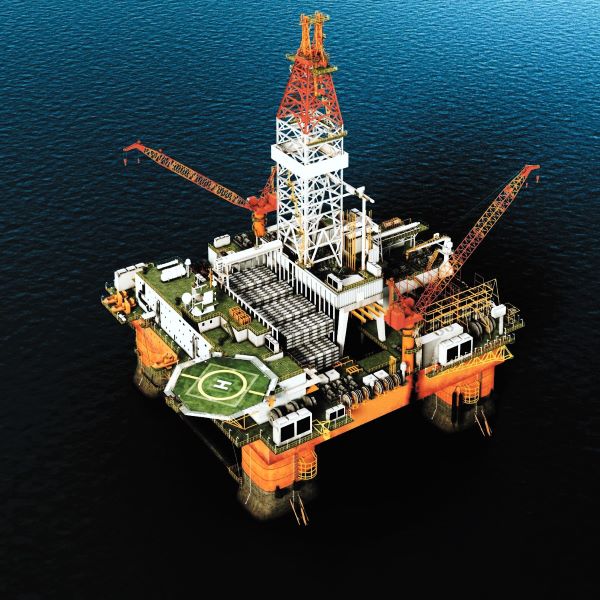Here’s an overview of the function and basic components of a Semi-submersible Platform:
Pontoon Structure: The semi-submersible platform consists of multiple buoyant pontoons or columns that are partially submerged beneath the water surface. These pontoons provide buoyancy and stability to the platform.
Deck: The deck is the main working area of the semi-submersible, where drilling rigs, production facilities, living quarters, and other essential equipment are located. It is elevated above the water surface to avoid wave impacts.
Column Joints: The pontoons are connected to the deck through flexible joints. These joints allow for relative motion between the pontoons and the deck, contributing to the semi-submersible’s ability to adjust its draft and respond to wave forces.
Ballast System: A ballast system is integral to the semi-submersible’s functionality. By adjusting the amount of water in the pontoons, the platform can control its buoyancy and draft. This allows the platform to partially submerged during operations for enhanced stability and rise to the surface during transit.
Mooring System: Semi-submersibles are anchored to the seabed using mooring lines or thrusters. This mooring system provides stability and ensures the platform remains in its designated location. Dynamic positioning systems may also be employed for precise positioning.
Risers and Conductors: Riser systems transport oil, gas, and other hydrocarbons from the seabed to the processing facilities on the deck. Conductors provide structural support for wellheads and guide the risers.
Cranes and Handling Equipment: Semi-submersibles often feature cranes and handling equipment for lifting heavy loads, performing drilling operations, and facilitating various tasks on the deck.
Living Quarters: Accommodation facilities are provided for the crew and operational staff. These living quarters include sleeping quarters, dining areas, recreation spaces, and other amenities necessary for personnel working on the platform.
Helideck: A helideck is typically included for helicopter transportation, allowing for crew changes, supply deliveries, and emergency evacuations.
Control Room and Systems: The control room houses the platform’s control systems, monitoring equipment, and communication systems. It serves as the nerve center for managing platform operations and safety.
Thrusters: Thrusters may be incorporated into the semi-submersible platform to provide additional propulsion and enhance its dynamic positioning capabilities, allowing it to maintain a precise position without traditional mooring.


